Winter Blue Jay Pitt Pastel Tutorial & Techniques

When it comes to wildlife art and pet portraits, there is no other medium that compares to pastel pencils for producing the rich and nuanced color and detail seen in the most impressive artwork featuring feathers and fur.
Pitt Pastel pencils offer the artist the best of both worlds, combining the confidence and control of a pencil with the soft, looser mark of pastel. The colors can be blended and layered just as they would in a soft pastel painting. Their pencil form also allows the pastel to be easily sharpened to a point and be used for developing details in artwork.
The Pitt pastel pencil lead contains a high level of pigment, making the pencils ideally suited both for drawing lines and shading, as well as blending and merging into delicate color transitions. Their light, clean application creates significantly less dust than other pastel chalks during use, allowing artists to enjoy pastel techniques without the mess that often accompanies them. Pitt pastel pencils also combine well with Polychromos pastels making them the perfect complement.
Pitt pastel pencils come in a comprehensive range of 60 vivid colors, and are lightfast and acid-free. They are also conveniently color-matched to all other Faber Castell Art & Graphic Products, enabling reliable mixing techniques of all artists’ materials.
These professional quality Pitt Pastel Pencils are offered both individually and in tins of 12, 24, and 36 pieces. The full range of 60 pencils offer an assortment of beautiful colors featuring extensive shades for landscapes, portraits, wildlife, design, etc..
Shop Pitt Pastel Pencils
Faber Castells traditional commitment to producing the highest quality art materials available insure the artist with the creative inspiration they seek for producing unique and professional works of art.
Pitt Pastel Techniques:
Shading
Pitt pastel pencils when held at an angle produce even, flat color for shading and coverage. A variety of color intensities can be achieved by the amount of pressure used with the pencil.
Parallel Hatching / Cross Hatching
Hatching is a technique of drawing fine parallel lines close together to give the effect of shading. The closer together the lines are, the darker the area appears.
Cross hatching are hatching marks overlapped at different angles. Depending on the density of the lines and number of colors used, new tones can be created.
Mixing and Smudging
Smudging is a technique where colors are rubbed into the paper with a finger, blending stump or cloth. Soft, smooth color gradients can be created by smudging the lighter colors into the darker colors.
Blending
Blending color is very easy with Pitt pastel pencils. It is possible to achieve outstanding effects using just the pencils themselves. It is also possible to blend with a finger to achieve a good solid color. Blending stumps and other paintbrush-like tools with various rubber tips offer excellent blending results for small areas that are impossible to achieve with a finger.
Fixing
Due to the absence of waxes and oils in Pitt pastel pencils, a fixative is recommended to prevent unwanted smudging and to protect the final piece of art. Using fixative also offers another great advantage. You can spray throughout your art process to restore tooth to continue with layers of pastel. Note that while a fixative successfully binds the pigments, it can also slightly darken the colors.
Glazing color
Glazing is a very effective technique where a very thin layer of color is applied over another. This creates an optical mixture with the base color shining through the upper layer of color.
Mixed media
Pitt Pastel Pencils are also popular for use in combination with Albrecht Durer Artists’ Watercolor Pencils. Interesting creative effects can be achieved with pastel pencil applied on top of dried watercolor.
Making corrections
A vinyl eraser will completely remove pastel color while a kneaded eraser can gently lift and lighten color.
Tips for using Pitt pastel pencils for animals
1. Choose a sanded paper meant for pastel or a paper with enough tooth to hold the pigment and accept layers of pastel. Toned paper is also a popular choice, as it presents a neutral background to go both lighter and darker with your pencils.
2. Lighten your outline drawing with a kneaded eraser before you begin to draw and color over it.
3. Use the side of the pencil for shading in the foundation color of the animal.
4. Draw fur in the direction it is growing in.
5. Work dark to light.
6.Use fingers for blending sparingly, and experiment with using other pencils, paper stubs or color shapers for blending.
7. Avoid accidentally smudging your work by using a piece of tracing paper or glassine (protective sheets of glassine can be found in sanded paper pads) under your drawing hand.
How to: Draw a Blue Jay

After transferring my line drawing of the bird to my light grey sanded pastel paper, I lighten the line with my kneaded eraser to the point of it barely being visible. I begin by using my pencils to lay down the first layer of pigment. I then use a soft paper stump to smudge the color in the direction of the feather’s growth. This method creates a soft smooth foundation for which to add more layers of color and detail on. I save the branches for later, so I am not accidentally smudging them with my hand as I work on the bird.

I look closely at my resource photo and choose as many colors as I can see; you might be surprised at how many there really are – several warm and cool greys, blues and lavender, about 12 pencils. The more colors you use, the more richness and depth will be reflected in the final art. I take my time rendering the color transitions of the eye, beak, and feather shapes of the birds head. The tip of the paper stump is very useful for blending these small areas.

In this step I move onto the bird’s breast. I keep it simple with just soft muted color and few pencil strokes for a bit of detail and definition. I continue to use the stump, my finger and Q -Tips for blending. I also allow for the grey tone of the paper to show through here and there integrating and unifying the art as a whole.

I move on to the bird’s feet and tail. The shapes here are rather abstract; I enlarge this area of my resource photo and just carefully draw the shapes I see. I keep my pencils sharp, and I smooth lines and edges with the point of the stump.

I add dimension and perspective to the artwork by rendering the foreground branches with more vivid detail, and draw the branches behind the bird in a lighter, softer and less detailed manner.



